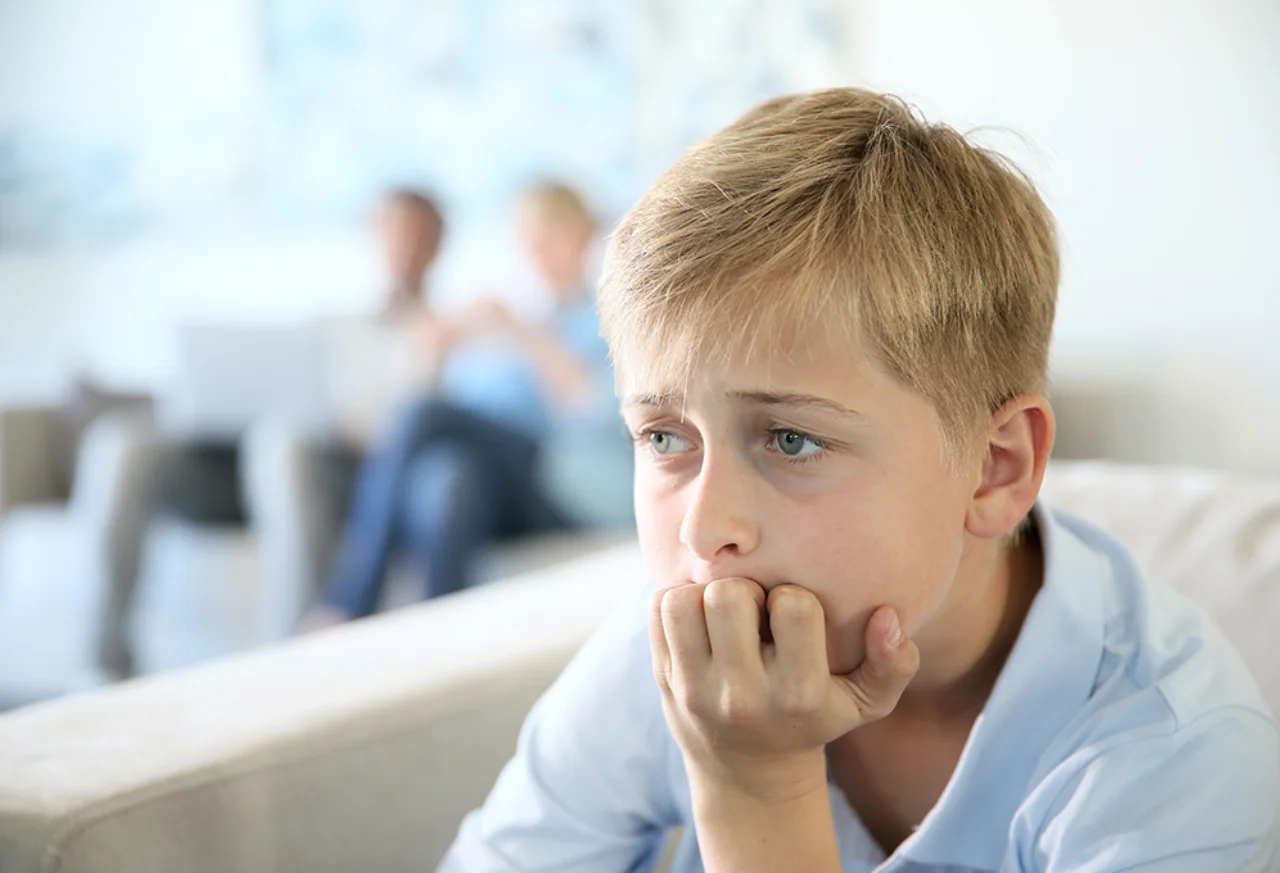Anxiety in children is an increasingly common issue that many parents face today. As a parent, it’s normal to worry about your child’s emotional health, especially when it comes to managing the stressors and challenges of growing up in a fast-paced world. However, when anxiety becomes a frequent part of your child’s life, it can impact their well-being, development, and overall happiness. Understanding the signs, causes, and effective strategies to manage child anxiety is crucial in helping your child grow into a resilient and emotionally healthy adult.
In this comprehensive guide, we’ll explore what child anxiety is, how it manifests, its potential causes, and, most importantly, practical steps you can take as a parent to support your child.
What Is Child Anxiety?
Anxiety is a natural and often beneficial reaction to stress. It can help children stay alert and cautious in potentially dangerous situations. However, when a child experiences anxiety excessively or irrationally, it can interfere with their daily life, school, and social interactions.
Child anxiety manifests as persistent worries, fears, or nervousness that are beyond what is typical for their age. Unlike adults, children may not always be able to express what they’re feeling, so anxiety can often go unnoticed or be mistaken for other behavioural issues.
Common Signs of Anxiety in Children
Recognizing anxiety in children can be challenging because they may not have the language or understanding to articulate their feelings. Here are some signs to look out for:
1. Physical Symptoms: Complaints of stomach aches, headaches, muscle tension, or fatigue with no clear physical cause can indicate anxiety. They may frequently feel unwell, especially before stressful events like exams or social gatherings.
2. Sleep Issues: Difficulty falling asleep, frequent nightmares, or waking up multiple times during the night could be signs of anxiety. An anxious child may also experience bedwetting or express fears of being alone in the dark.
3. Behavioural Changes: Withdrawal from activities they once enjoyed, avoiding social interactions, or becoming overly clingy are signs that a child might be feeling anxious. Some children may exhibit temper tantrums, defiance, or irritability as a way to cope with their overwhelming feelings.
4. Emotional Signs: Excessive worry, fear of failure, or being overly concerned about things that most children would not worry about. They may express feelings of being overwhelmed, have low self-confidence, or seek constant reassurance.
5. Academic Difficulties: Anxiety can impact concentration and memory, making it difficult for children to perform well in school. They may avoid school altogether or procrastinate on assignments due to fear of making mistakes.
Common Causes of Anxiety in Children
Understanding the root causes of your child’s anxiety can help you address it more effectively. Here are some factors that may contribute to anxiety:
1. Genetics: Anxiety can run in families, meaning if parents or close relatives have anxiety disorders, children might be more likely to develop anxiety themselves.
2. Parenting Style: Overprotective or highly critical parenting can contribute to a child’s anxiety. Kids need space to explore, make mistakes, and learn to handle challenges independently.
3. Environmental Stressors: Significant changes, such as moving to a new house, changing schools, divorce, or the death of a loved one, can trigger anxiety in children.
4. Academic Pressure: The pressure to excel in school or extracurricular activities can overwhelm children, leading to chronic stress and anxiety.
5. Social Factors: Bullying, peer pressure, or struggling to fit in with peers can create significant anxiety. Social media can also contribute to feelings of inadequacy or fear of missing out (FOMO).
6. Perfectionism: Some children naturally hold themselves to high standards. The fear of not meeting those expectations can cause them a great deal of anxiety.
Types of Anxiety Disorders in Children
Anxiety is not a one-size-fits-all condition. It comes in different forms, each with its own unique characteristics. Below are a few common types of anxiety disorders in children:
1. Generalised Anxiety Disorder (GAD): Characterised by excessive, uncontrollable worry about everyday activities and events. Children with GAD may worry about their schoolwork, future events, family matters, or even world issues like climate change.
2. Separation Anxiety Disorder: Common in younger children, this is the intense fear of being separated from parents or caregivers. It often manifests as clinginess, crying, or physical symptoms like headaches when away from home.
3. Social Anxiety Disorder: This involves an intense fear of being judged or embarrassed in social situations. Children with social anxiety may avoid speaking in class, making new friends, or participating in group activities.
4. Panic Disorder: Some children may experience sudden and intense panic attacks, which include symptoms like a racing heart, shortness of breath, dizziness, or an overwhelming sense of doom. These attacks can be extremely frightening for a child.
5. Specific Phobias: These involve irrational fears of specific objects or situations, such as animals, heights, flying, or even loud noises like thunderstorms.
Effective Strategies for Parents to Manage Child Anxiety
Now that you understand what anxiety looks like in children and its potential causes, let’s explore ways you can help your child cope and build resilience.
1. Create a Safe and Supportive Environment
A nurturing home environment is the foundation for helping children manage anxiety. Encourage open communication by creating a space where your child feels safe to express their feelings without fear of being judged or dismissed.
2. Teach Emotional Awareness
Help your child recognize and label their feelings. Use phrases like, “I see you’re feeling worried” or “It’s okay to feel nervous about new things.” Teaching children to identify their emotions helps them manage anxiety more effectively.
3. Practice Mindfulness and Relaxation Techniques
Mindfulness exercises, deep breathing, and meditation can calm the mind and body. Teach your child simple techniques like taking slow, deep breaths or visualising a calm, safe place when they feel anxious.
4. Encourage Healthy Routines
Physical activity, a balanced diet, and sufficient sleep are crucial for managing anxiety. Regular exercise releases endorphins, which can help reduce stress, sleep disorders and boost mood. Ensure your child has a consistent bedtime routine to promote better sleep.
5. Model Healthy Coping Mechanisms
Children often learn by observing their parents. If you stay calm and composed during stressful situations, your child is likely to mirror those behaviours. Show them how you handle stress by engaging in healthy practices like going for a walk, talking about your feelings, or practising self-care.
6. Help Them Face Their Fears Gradually
Avoiding situations that trigger anxiety may provide temporary relief but can reinforce fear in the long term. Encourage your child to face their fears in a supportive way. Start with small steps and celebrate their successes to build their confidence.
7. Set Realistic Expectations and Goals
Help your child set realistic, achievable goals, especially if they tend to be perfectionists. Praise their efforts, not just their accomplishments, to encourage a growth mindset.
8. Seek Professional Support When Needed
If your child’s anxiety is severe and impacting their daily life, consider seeking help from a child psychologist or therapist. Cognitive-behavioural therapy (CBT) has proven to be effective in treating anxiety disorders in children.
How to Build Emotional Resilience in Children
Resilience is the ability to bounce back from difficult experiences. Building emotional resilience can help children manage anxiety and cope with life’s challenges more effectively.
1. Encourage Problem-Solving Skills: Teach your child how to break down challenges into smaller, manageable steps. This fosters independence and confidence.
2. Foster Social Connections: Strong, healthy relationships with family and friends provide children with a sense of security and belonging. Encourage your child to build positive friendships.
3. Promote a Positive Outlook: Help your child focus on their strengths and the positives in their life. Practising gratitude can shift their perspective from worry to appreciation.
4. Allow Mistakes and Failures: Resilience grows when children learn to handle setbacks. Encourage them to see mistakes as learning opportunities rather than failures.
5. Encourage Play and Creativity: Unstructured playtime allows children to explore, create, and unwind. Activities like drawing, painting, or playing outside can reduce stress and enhance emotional well-being.
The Role of Schools and Teachers in Managing Child Anxiety
Schools play a significant role in a child’s life, and educators can be valuable allies in supporting children with anxiety. Teachers can help by:
– Creating a safe and inclusive classroom environment.
– Encouraging children to express their concerns.
– Providing structured routines that can reduce anxiety.
– Being patient and understanding when children are struggling.
Parents can also collaborate with teachers to develop strategies that support their child’s specific needs, such as additional time for tests or a quiet space to decompress.
Conclusion
Anxiety is a normal part of growing up, but it doesn’t have to dominate your child’s life. By understanding the signs, causes, and coping mechanisms, you can empower your child to overcome their fears and grow into a resilient, emotionally healthy individual. Remember, you’re not alone in this journey—seek support from professionals when needed, and focus on creating a positive, nurturing environment where your child feels safe to explore, learn, and grow.
With your support and guidance, your child can develop the tools they need to face life’s challenges confidently and with resilience.


